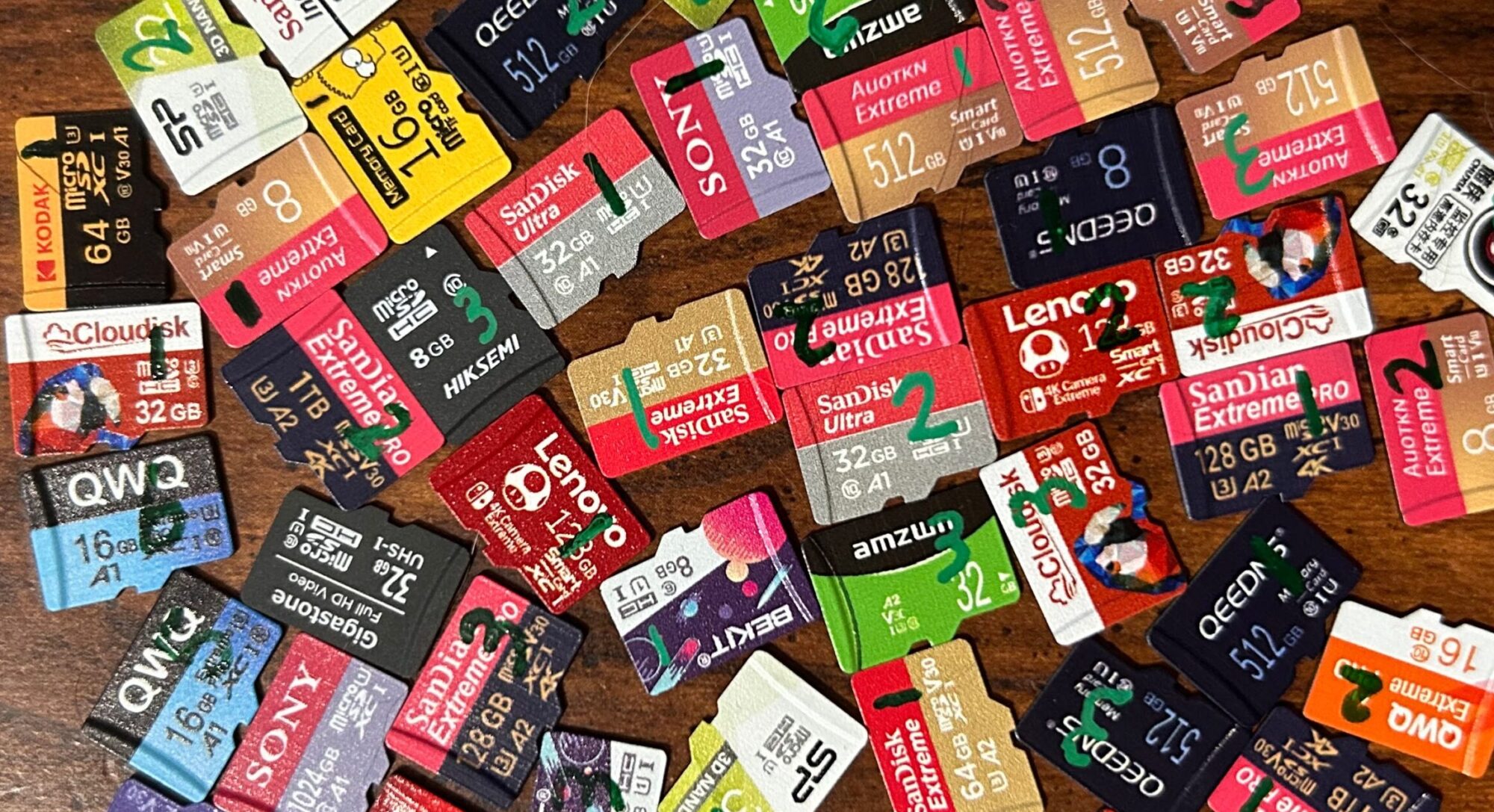Kingston is a brand that I’ve been well aware of for many years now — and going into this project, I’ll admit that I had a bias against them — I’ve had other projects where I’ve used both Kingston and SanDisk cards, and multiple Kingston cards failed on me whereas the SanDisk cards didn’t. Regardless, I wanted to give them a fair chance.
This is the third model of Kingston’s that I’ve purchased (after the Kingston Canvas Select Plus and the Kingston Canvas Go! Plus) — as I seem to be on a quest to see not only which microSD card will endure the best, but also which Kingston microSD card will endure the best. This is also the second industrial-grade card I’ve purchased as I also seem to be on a quest to see which industrial-grade microSD card will endure the best. I wasn’t able to find any of these on either Amazon or AliExpress that were within my price range (although in hindsight, I realize that I may have not looked hard enough, because there absolutely were some that were within my price range), so this card marks the first use of a supplier other than Amazon or AliExpress for this project.
Unlike the SanDisk Industrial 8GB, this card came in retail packaging. However, this card is missing the color-shifting stripe that the other Kingston cards have. If you look at the product pictures, it looks like the 8GB model is the only one that doesn’t have this stripe — the 16GB and larger versions all seem to have it.
These cards met all the criteria that I set out for determining what’s considered a name-brand card, so they’ll go into the name-brand bin.
All performance metrics were above average, and all scores were clustered pretty closely together. All scores fell between the 62nd and 89th percentiles (as of the time of this writing). In particular, these cards got strong sequential write and random write scores, putting them between the 82nd and 89th percentiles. These cards carry the Class 10, U3, V30, and A1 marks; performance was good enough across all three samples to qualify for these markings. (Well done, Kingston!)
All three samples are currently undergoing endurance testing.
- Sample #1’s first error was a two-sector wide address decoding error during round 8,801. It has survived 80,154 read/write cycles in total so far.
- Sample #2’s first error was a four sector wide address decoding error during round 6,368. It has survived 109,180 read/write cycles in total so far.
- Sample #3’s first error was a two-sector wide address decoding error during round 8,769. It has survived 109,194 read/write cycles in total so far.
Overall? I’m actually liking these cards. While they don’t perform as well as, say, the Kingston Canvas Go! Plus or the PNY PRO Elite Prime, they’re still strong contenders. And, as far as industrial-grade cards go, they outperformed the SanDisk Industrial 8GB’s on pretty much every metric: they’re less skimpy (their capacity is slightly over 8GB, while the SanDisk Industrial 8GB was slightly less than 8GB), they performed better in performance tests, and they have lasted far longer in endurance tests than any of the SanDisk Industrial’s did. The main drawback is price — they’re far more expensive than anything else I’ve tested (in terms of price per gigabyte). But if you want a reliable card that also performs decently well, and cost isn’t that much of an issue? This is the card to go with.
September 27, 2025 (current number of read/write cycles is updated automatically every hour)

